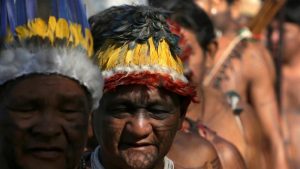Before taking this course, I knew very little about Brazil. My FYS was Latin America through the Arts, and we had spent time learning about capoeira and feijoada. I had also heard about Carmen Miranda but did not know a lot about her. Some of the most important things I have learned are:
- It was interesting to learn about cannibalism and the views of Europeans/Portuguese/Spanish towards it. This may not be exceedingly important but as I love precolonial and postcolonial history, it was very interesting to learn. It shows how history can be skewed and how opinions differ for various cultural and historical difference and how people can be affected in similar cultures very differently.
- I think it was important to learn different race theories. In the U.S., we learn mostly about the theory that if someone has a single African American relative, they will be identified as black. It’s very important to learn different race theories, like Brazil’s mestizo theory, because it helps us to understand how people in other countries are oppressed, especially if the oppression is different from what we experience/witness.
- Finally, I learned a lot about Wikipedia which is very important. Growing up, we are taught to never use Wikipedia because it is something easily manipulated and is full of incorrect facts. By being trained on Wiki, I learn what a reputable article looks like and how I can use and understand Wiki to help me on future projects.

